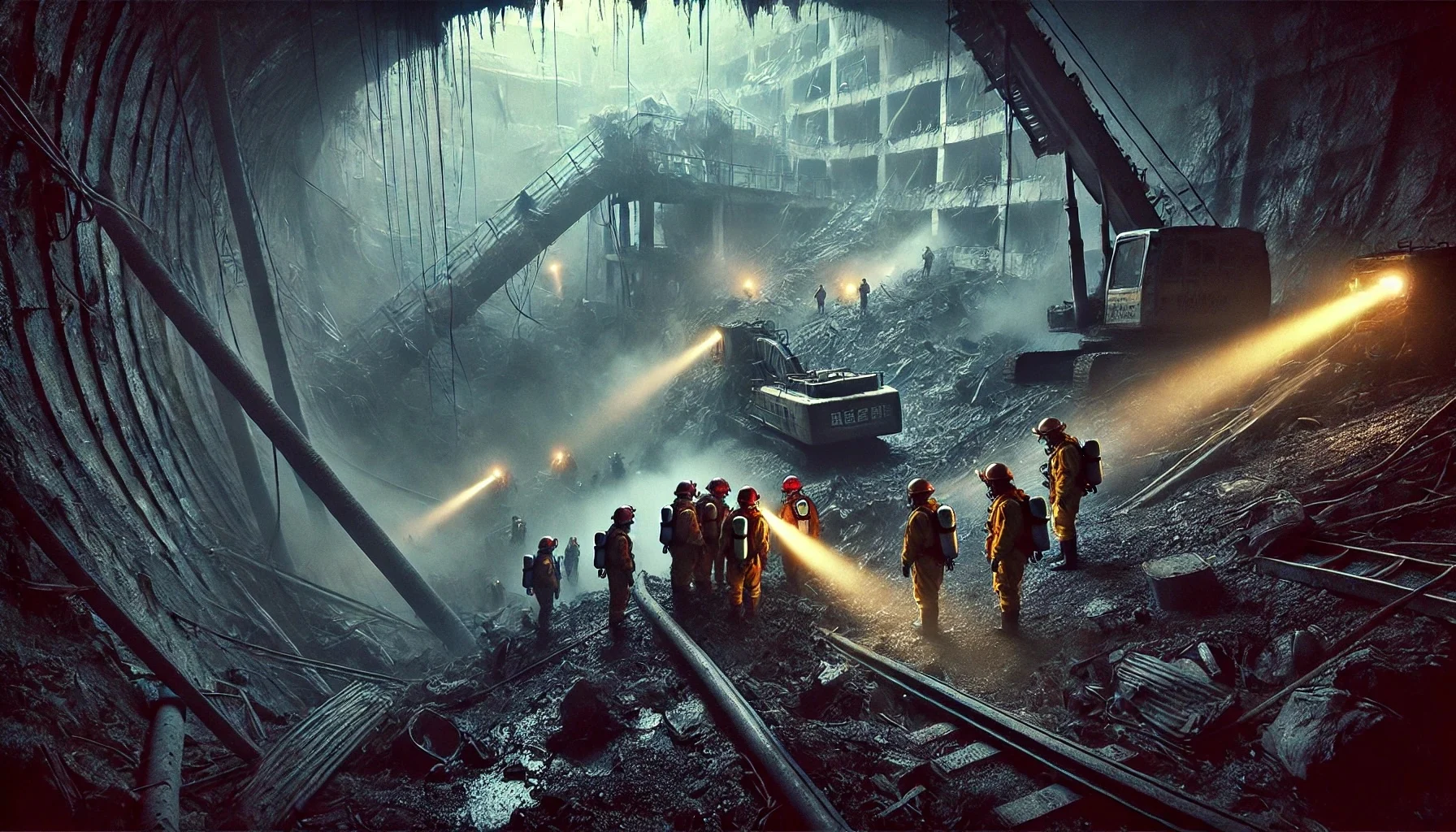
The Xiaojiawan Coal Mine Explosion
by: The Calamity Calendar Team
August 29, 2012
A Day Like Any Other
For the miners at Xiaojiawan, August 29, 2012, began like any other day. The sun rose early over Panzhihua, a mining city nestled in the mountains of Sichuan Province. It was a city built on coal, where generations of men had worked in the mines to support their families. By mid-morning, 154 miners had descended into the depths of the Xiaojiawan Coal Mine, a sprawling underground network that wound deep beneath the earth.
The mine was known for its wealth of coal, a vital resource in China's booming economy. But like many mines in the country, it was also notorious for its hazardous working conditions. Methane gas, a highly explosive byproduct of coal mining, was a constant threat. Yet, the miners had learned to live with the danger, trusting that their experience and luck would keep them safe.
The Explosion
At approximately 5:00 PM, the routine grind of mining was shattered by a violent explosion. Deep within the tunnels, a spark ignited a pocket of methane gas, setting off a chain reaction. The force of the blast rocked the mine, and within seconds, a secondary explosion tore through the tunnels as coal dust ignited. The blast was so powerful that it collapsed large sections of the mine, trapping many of the workers in the darkness.
Panic spread quickly as the explosion plunged the mine into chaos. Thick, black smoke filled the air, choking those who survived the initial blast. Temperatures soared as fires raged through the tunnels, making the air nearly impossible to breathe. Disoriented and injured, the miners scrambled to find safety, but for many, there was nowhere to go.
The Desperate Rescue
Above ground, the explosion sent shockwaves through the community. Families gathered at the mine's entrance, their faces etched with worry as news of the disaster spread. Rescue teams were quickly mobilized, but the situation was dire. The collapse of the tunnels made it nearly impossible to reach those trapped inside, and the toxic gases that filled the mine turned the rescue mission into a race against time.
For the rescuers, it was a dangerous and heartbreaking task. They braved the intense heat and thick smoke, working tirelessly to reach the trapped miners. But the conditions were unforgiving, and as the hours passed, hope of finding more survivors began to fade.
Thanks for subscribing!
In the end, the rescue efforts managed to pull 51 injured miners from the wreckage. But for 46 others, the rescue came too late. The bodies of the deceased were eventually recovered, each one a painful reminder of the lives lost in the darkness of the mine.
A Community in Mourning
The Xiaojiawan Coal Mine disaster devastated the city of Panzhihua. The mine had been a source of livelihood for the community, but now it was a symbol of tragedy. As the families of the victims mourned their losses, anger and frustration boiled over. How could such a disaster happen? Why were safety measures not in place to prevent it?
Investigations revealed that the mine had been operating with grossly inadequate safety protocols. The accumulation of methane gas, which should have been detected and dealt with, was ignored. The secondary coal dust explosion, which could have been prevented with proper ventilation and safety measures, was another sign of negligence. In the aftermath, several mine managers and officials were arrested, charged with violating safety regulations and failing to protect the lives of their workers.
The Aftermath
The Xiaojiawan explosion was a wake-up call for China's mining industry, which had long been plagued by accidents and safety violations. In response to the tragedy, the government launched a nationwide crackdown on unsafe mining practices, imposing stricter regulations and increasing inspections. But for many in Panzhihua, these measures came too late. The loss of 46 lives was a stark reminder of the human cost of coal mining.
Today, the Xiaojiawan Coal Mine stands as a somber reminder of that fateful day in August 2012. The mine remains closed, and the community continues to grapple with the aftermath of the disaster. For the families who lost loved ones, the pain is still fresh, a wound that time has not yet healed.
The Xiaojiawan disaster is a story of tragedy and loss, but also of the resilience of a community that refuses to be forgotten. It is a reminder of the dangers that lie beneath the surface and the importance of safety in an industry where the cost of failure can be measured in human lives.
Stay in the Loop!
Become a Calamity Insider and get exclusive Calamity Calendar updates delivered straight to your inbox.
Thanks! You're now subscribed.